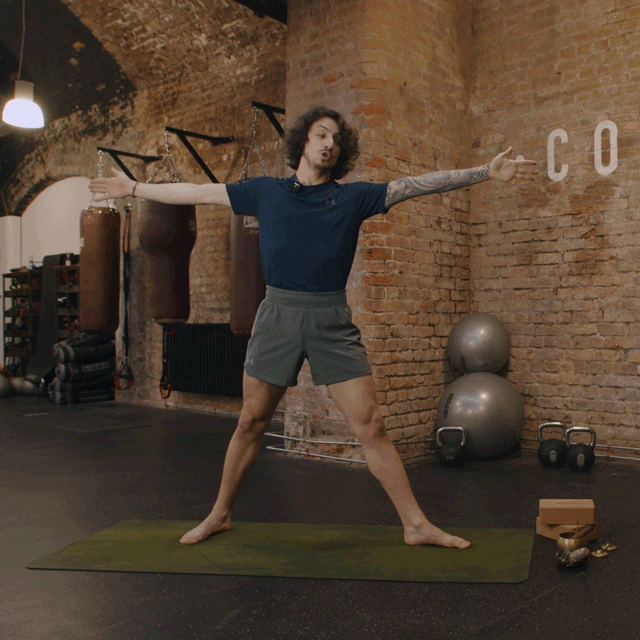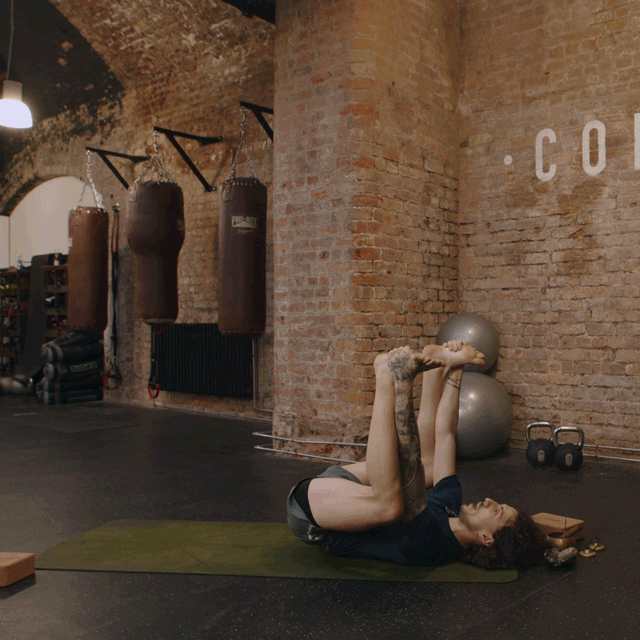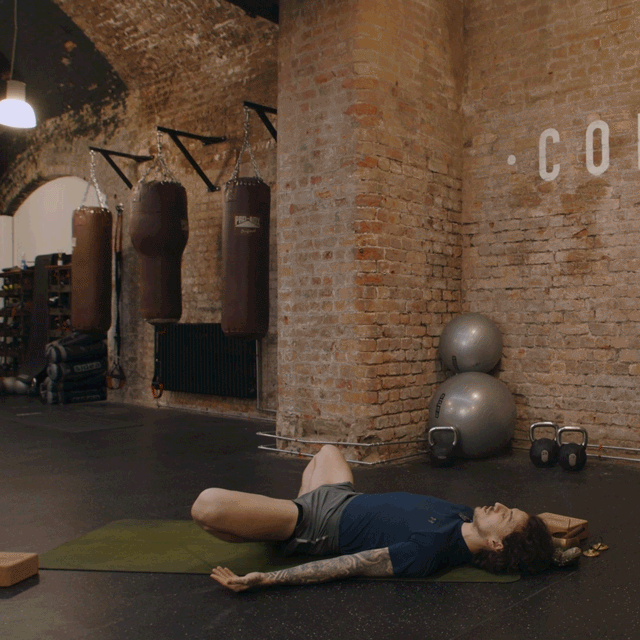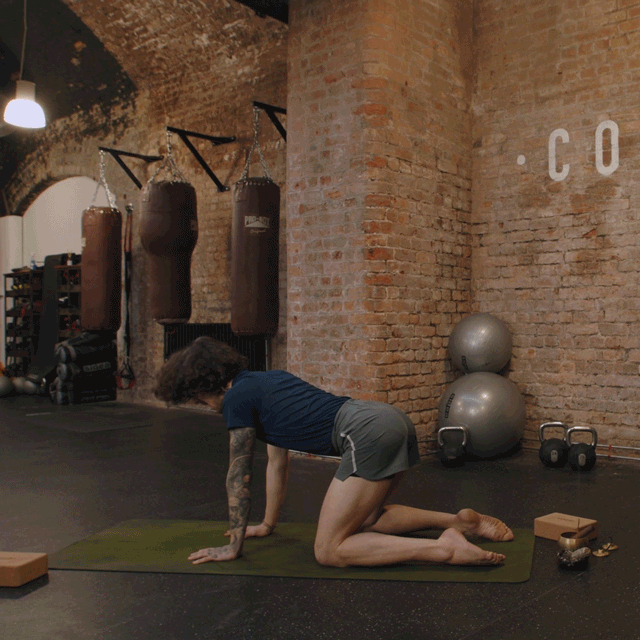Yoga for men: Better pelvic floor health in just 20 minutes
- Male pelvic floor health is neglected
- Men’s yoga to target the pelvic floor muscles
- An easy breathwork routine to target the pelvic floor muscles
- The link between pelvic floor health and men’s health conditions
- The link between the pelvic floor muscles and erectile dysfunction
- The link between the pelvic floor muscles and performance anxiety
- The link between the pelvic floor muscles and premature ejaculation
- The link between the pelvic floor muscles and bladder and bowel control
- How yoga can be a natural solution to conditions linked to weak pelvic floor muscles
Reviewed by Peeyush Bahl
This men’s yoga routine and breathwork exercise is designed to help strengthen the pelvic floor muscles, leading to better sex and improved bowel and bladder control.
Male pelvic floor health is neglected
Too often, men’s pelvic floor health is not a priority for men themselves, or more widely, the medical profession. However, studies have shown that strengthening weak pelvic floor muscles can help to improve common men’s health issues like:
- Erectile dysfunction (ED)
- Premature ejaculation (PE)
- Performance anxiety
- Incontinence
We have partnered with yoga instructor and pelvic floor health expert, Anthony Moran, to create a yoga tutorial which targets men’s pelvic floor muscles. The 20-minute video is designed to help men enjoy better sex and retain bowel and bladder control.
For men who are less mobile, Anthony has also created a breathwork exercise. This five-step ancient breathing technique can help to:
- Calm anxiety and stress
- Combat ED, PE and performance anxiety
At the end of this guide, yoga advocate and Independent Prescribing Pharmacist at LloydsPharmacy Online Doctor, Peeyush Bahl, explains the medical science behind men’s pelvic floor health. Peeyush outlines the benefits of each yoga pose and details why it’s so important for men to prioritise their pelvic floor health, especially as they get older.
Men’s yoga to target the pelvic floor muscles
This quick and easy yoga routine focuses on engaging and strengthening your pelvic floor muscles. These are the band of muscles between the tailbone and the pubic bone that support the bladder, bottom, and penis.
For further guidance, watch the full 20-minute tutorial where Anthony gives modifications for each of the five poses to ensure it’s accessible for everybody.
The full tutorial
The step-by-step guide
Triangle pose (trikonasana)

The energising, triangle pose opens the hips and stretches the groin and hamstrings. It also stimulates blood flow to the pelvic region.
Yogi squat pose (malasana)

Yogi squat is one of the best poses for strengthening the pelvic floor and thigh muscles. This grounding pose also benefits mental health by calming the mind.
Cat and cow pose (marjaryasana and bitilasana)
Cat pose is generally followed by cow, its counterpose. As well as softly stretching the back, torso and neck, it stimulates the adrenal glands, promoting hormonal health.
Happy baby pose (ananda balasana)

An anxiety-calming pose, happy baby stretches the inner thighs, hips and groin. Alongside this, it can help to relieve back pain.
Reclining bound angle pose (supta baddha konasana)

This pose involves opening the hips and groin, stimulating the reproductive system and promoting relaxation and reducing anxiety.
An easy breathwork routine to target the pelvic floor muscles
This seven-minute breathwork tutorial talks you through alternate nostril breathing and is designed to calm anxiety and reduce stress, helping to promote a healthy bladder, bowel, and sexual organ function.
The link between pelvic floor health and men’s health conditions
Peeyush Bahl is a Prescribing Pharmacist at LloydsPharmacy Online Doctor. He has been practising yoga for 10 years and advocates strongly for the practice of yoga to tackle men’s physical and mental health concerns.
The link between the pelvic floor muscles and erectile dysfunction
“Erectile dysfunction (ED) is when you are either unable to get an erection or can’t keep an erection for long enough to have sex.
“Around 41% of men in the UK suffer with the condition and it becomes more prevalent as men age. By age 70, 70% of men are affected. Sadly, more than two-thirds of men with ED are unlikely to seek medical advice.
“Treatment for ED depends on the cause. It is commonly brought on by stress, tiredness or drinking too much alcohol. However, it can also be caused by more serious conditions such as high blood pressure, high cholesterol, and diabetes.
“One of the most common and best-known ED treatments is Viagra which works by increasing blood flow to the penis. Last year, the NHS spent over £5.8 million on prescription for the medication.
“However, exercises which strengthen the pelvic floor muscles could be a natural solution to tackling erectile dysfunction. The pelvic floor muscles play a key role in getting and maintaining an erection. In one study, pelvic floor muscle exercises improved erectile function in 75% of men.”
The link between the pelvic floor muscles and performance anxiety
“Sexual performance anxiety (SPA) is when you experience feelings of unease, worry or fear related to sexual situations. These emotions can make it difficult to have and enjoy sex. ED can be a symptom of SPA.
“Estimations vary but it’s thought SPA may affect up to one in four (25%) men. There are multiple recommended treatment options for SPA including self-care, psychological therapy and medication.”
The link between the pelvic floor muscles and premature ejaculation
“Premature ejaculation (PE) is when a man ejaculates too quickly during sex. PE can be caused by both physical conditions and psychological factors.
“Self-help techniques are usually recommended in the first instance. If these fail to help, medicines including tablets and topical creams may be prescribed.
“Data indicates that too often, prescription medicine is being overly relied on. 55% of internet searches are medication-related, compared to just 2% who are seeking natural solutions. NHS prescription data supports this trend - 2023 saw a 62% increase in prescriptions for PE tablet medication, Dapoxetine.
“For those seeking a natural alternative, pelvic floor muscle rehabilitation can be a holistic approach for overcoming PE. In a medical study, physiotherapy that targeted the pelvic floor muscles was proven to be an effective treatment method for 83% of participants with lifelong PE.”
The link between the pelvic floor muscles and bladder and bowel control
“Urinary or bladder incontinence is the unintentional passing of urine. It affects around 7 million people in the UK and becomes more common with age. Sadly, it often also has an effect on the individual’s mental health.
“It’s often seen as a women’s issue but it’s estimated 1 in 3 (33%) of men over 65 will experience urinary incontinence.
“What’s more, some men’s health conditions and treatments can also trigger bladder incontinence. Benign prostate enlargement is common in men over 50 and is associated with changes to bladder function. Similarly, a common side effect of treatment for prostate cancer (which affects 1 in 8 men) is urinary problems.
“Bowel incontinence is the inability to control bowel movements. It is thought one in ten (10%) will be affected by it at some point in their life. Like bladder incontinence, it becomes more common with age. And it is more common in women.
“The NHS recommend incontinence pads and other products only as temporary measures for people awaiting diagnosis or for treatment to work. But reviews suggest an excessive reliance on pads as a long-term solution in lieu of more appropriate treatment.
“As well as having the potential to cause skin irritation, infections and emotional distress, incontinence pads are expensive. The NHS is estimated to spend £80 million per year on incontinence pads.
“In men, the pelvic floor muscles support the anus (back passage) and urethra (bladder outlet). If these muscles are weak, they cannot support these two openings effectively, leading to bladder and bowel control problems.
“Strengthening the pelvic floor through specific kegel exercises or activities like yoga has been shown to benefit bladder and bowel control.”
How yoga can be a natural solution to conditions linked to weak pelvic floor muscles
“Conditions caused by poor pelvic floor health affect millions of men in the UK and impact mental and physical health, sexual fulfilment, independence and more. Plus, treating and managing these conditions costs the NHS huge sums of money.
“Yoga can aid mental and physical wellbeing through its focus on strength, flexibility and breathing. Yoga poses like triangle, yogi squat and happy baby that target the pelvic floor muscles offer the added benefit of relieving the men’s health symptoms associated with a weak pelvic floor.”
References
https://www.ncbi.nlm.nih.gov/pmc/articles/PMC9159135/
https://www.ncbi.nlm.nih.gov/pmc/articles/PMC5313305/
https://www.ncbi.nlm.nih.gov/books/NBK562253/
https://www.england.nhs.uk/wp-content/uploads/2021/03/1731-IIA.pdf
https://www.ncbi.nlm.nih.gov/pmc/articles/PMC1324914/
https://pubmed.ncbi.nlm.nih.gov/31447414/
https://www.ncbi.nlm.nih.gov/pmc/articles/PMC4003840/
https://www.britishjournalofcommunitynursing.com/content/professional/overview-of-urinary-incontinence/
https://prostatecanceruk.org/get-involved/campaigning/incontinence
https://www.nhsinform.scot/illnesses-and-conditions/stomach-liver-and-gastrointestinal-tract/bowel-incontinence/
https://www.nursingtimes.net/clinical-archive/continence/appropriate-use-of-continence-pads-to-support-individuals-dignity-27-03-2023/






